Kerosene, or paraffin, is a combustible hydrocarbon liquid which is derived from petroleum. It is widely used as a fuel in aviation as well as households. Its name derives from κηρός (kērós) meaning "wax", and was registered as a trademark by Nova Scotia geologist and inventor Abraham Gesner in 1854 before evolving into a generic trademark. It is sometimes spelled kerosine in scientific and industrial usage.

A lighthouse is a tower, building, or other type of physical structure designed to emit light from a system of lamps and lenses and to serve as a beacon for navigational aid, for maritime pilots at sea or on inland waterways.

A Molotov cocktail is a hand-thrown incendiary weapon consisting of a frangible container filled with flammable substances and equipped with a fuse. In use, the fuse attached to the container is lit and the weapon is thrown, shattering on impact. This ignites the flammable substances contained in the bottle and spreads flames as the fuel burns.
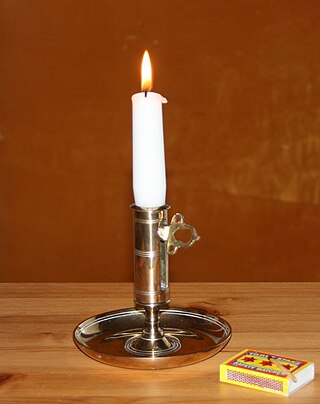
A candle is an ignitable wick embedded in wax, or another flammable solid substance such as tallow, that provides light, and in some cases, a fragrance. A candle can also provide heat or a method of keeping time. Candles have been used for over two millennia around the world, and were a significant form of indoor lighting until the invention of other types of light sources. Although electric light has largely made candle use nonessential for illumination, candles are still commonly used for functional, symbolic and aesthetic purposes and in specific cultural and religious settings.

A kerosene lamp is a type of lighting device that uses kerosene as a fuel. Kerosene lamps have a wick or mantle as light source, protected by a glass chimney or globe; lamps may be used on a table, or hand-held lanterns may be used for portable lighting. Like oil lamps, they are useful for lighting without electricity, such as in regions without rural electrification, in electrified areas during power outages, at campsites, and on boats. There are three types of kerosene lamp: flat-wick, central-draft, and mantle lamp. Kerosene lanterns meant for portable use have a flat wick and are made in dead-flame, hot-blast, and cold-blast variants.
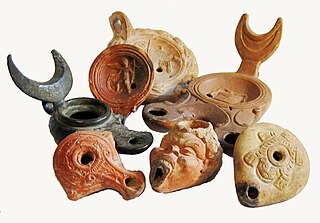
An oil lamp is a lamp used to produce light continuously for a period of time using an oil-based fuel source. The use of oil lamps began thousands of years ago and continues to this day, although their use is less common in modern times. They work in the same way as a candle but with fuel that is liquid at room temperature, so that a container for the oil is required. A textile wick drops down into the oil, and is lit at the end, burning the oil as it is drawn up the wick.

A portable stove is a cooking stove specially designed to be portable and lightweight, used in camping, picnicking, backpacking, or other use in remote locations where an easily transportable means of cooking or heating is needed. Portable stoves can be used in diverse situations, such as for outdoor food service and catering and in field hospitals.

A lantern is an often portable source of lighting, typically featuring a protective enclosure for the light source – historically usually a candle, a wick in oil, or a thermoluminescent mesh, and often a battery-powered light in modern times – to make it easier to carry and hang up, and make it more reliable outdoors or in drafty interiors. Lanterns may also be used for signaling, as torches, or as general light-sources outdoors.
A safety lamp is any of several types of lamp that provides illumination in places such as coal mines where the air may carry coal dust or a build-up of inflammable gases, which may explode if ignited, possibly by an electric spark. Until the development of effective electric lamps in the early 1900s, miners used flame lamps to provide illumination. Open flame lamps could ignite flammable gases which collected in mines, causing explosions; safety lamps were developed to enclose the flame to prevent it from igniting the explosive gases. Flame safety lamps have been replaced for lighting in mining with sealed explosion-proof electric lights, but continue to be used to detect gases.
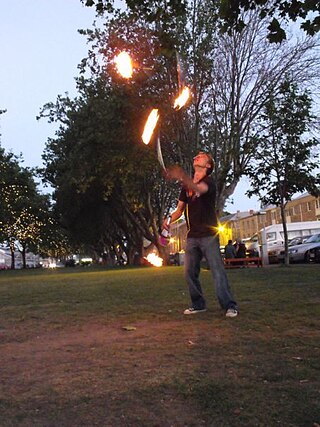
Juggling torches are one of various props used by jugglers. Torches are usually commercially made props that are made of wood and/or metal with a wick attached at one end. The wick is soaked in liquid fuel, usually paraffin and ignited before use.
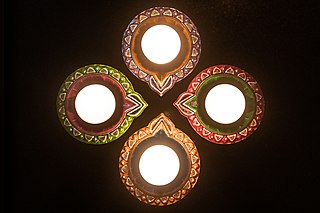
A diya, diyo, deya, deeya, dia, divaa, deepa, deepam, deep, deepak or saaki is an oil lamp made from clay or mud with a cotton wick dipped in oil or ghee. These lamps are commonly used in the Indian subcontinent and they hold sacred prominence in Hindu, Sikh, Buddhist, and Jain prayers as well as religious rituals, ceremonies and festivals including Diwali.

The Primus stove was the first pressurized-burner kerosene (paraffin) stove, developed in 1892 by Frans Wilhelm Lindqvist, a factory mechanic in Stockholm. The stove was based on the design of the hand-held blowtorch; Lindqvist's patent covered the burner, which was turned upward on the stove instead of outward as on the blowtorch. The same year, Lindqvist partnered with Johan Viktor Svenson and established J.V. Svenson's Kerosene Stove Factory for manufacturing the new stoves which were sold under the name Primus. The first model was the No.1 stove, which was quickly followed by a number of similarly designed stoves of different models and sizes. Shortly thereafter, B.A. Hjorth & Co., a tool and engineering firm begun in Stockholm in 1889, acquired the exclusive rights to sell the Primus stove.
Wijaya Godakumbura is the President of the Safe bottle lamp Foundation and was formerly a surgeon in Sri Lanka.
Camphine was the British trade name of a 19th-century lamp fuel made from purified spirits of turpentine. Generally prepared by distilling turpentine with quicklime, it gave off a brilliant light. It was burned in chimney lamps that produced a strong draft to prevent smoking. Invented in 1838, it was a popular domestic lamp fuel until the 1860s. Camphine was alternatively spelled camphene, especially in the United States.
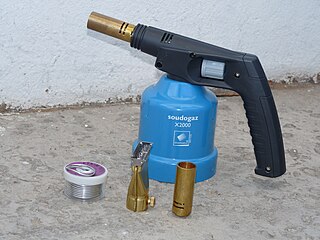
A blowtorch, also referred to as a blowlamp, is an ambient air fuel-burning tool used for applying flame and heat to various applications, usually in metalworking.

Semaphore is the use of an apparatus to create a visual signal transmitted over distance. A semaphore can be performed with devices including: fire, lights, flags, sunlight, and moving arms. Semaphores can be used for telegraphy when arranged in visually connected networks, or for traffic signalling such as in railway systems, or traffic lights in cities.
Dr. Lucian Jayasuriya is a Sri Lankan civil servant and medical manager.
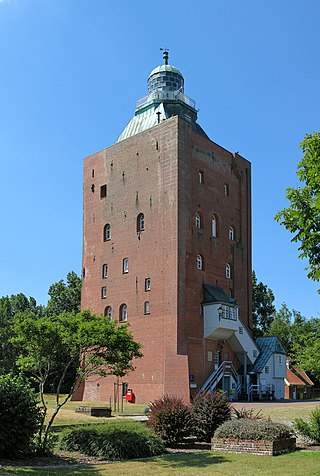
The Great Tower Neuwerk is the most significant building of the Neuwerk island, belonging to Hamburg. Completed in 1310, the structure is one of the oldest worldwide that was used as lighthouse (1814–2014) and still standing. This former beacon, watchtower and lighthouse is also the oldest building in Hamburg and oldest secular building on the German coast.
On 26 April 2019, Sri Lankan security forces and National Thowheeth Jama'ath militants linked to the Islamic State of Iraq and the Levant clashed when the security forces raided a house in the town of Sainthamaruthu in Ampara District at around 7:30 pm. The house had been used by the militants to manufacture explosives and suicide vests. Three suicide bombers blew themselves up, killing nine of their family members, including six children, while four other suspects where shot dead by the soldiers. A civilian was killed and two others were injured during the crossfire.












